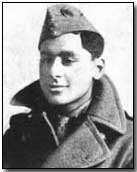| Indra Lal Roy | |
|---|---|
 Indra Lal Roy in the RFC uniform. | |
| Nickname | "Laddie" |
| Born | December 2, 1898 |
| Died | July 22, 1918 (aged 19) |
| Place of birth | Calcutta, British Raj |
| Place of death | Carvin, France |
| Allegiance |
|
| Service/branch |
|
| Years of service | 1917 - 1918 |
| Rank | Lieutenant |
| Battles/wars | Western Front, First World War |
| Awards | Distinguished Flying Cross |
Indra Lal Roy (Bengali language: ইন্দ্রলাল রায় ), DFC (2 December 1898 – 22 July 1918) was the first Indian flying ace. He served in the First World War with the Royal Flying Corps and its successor, the Royal Air Force. He claimed five aircraft destroyed (including one shared), and five 'down out of control' wins (including another shared) in just over 170 hours flying time.[1]
The son of Bengalis P. L. and Lolita Roy, he was born in Calcutta, where his father was Director of Public Prosecutions. When the First World War broke out, Roy was attending St Paul's School, Hammersmith in London, England. Five months after turning 18, in April 1917 he enlisted in the Royal Flying Corps and was commissioned as a second lieutenant on 5 July 1917. After training and gunnery practise at Vendôme and Turnberry, he joined No. 56 Squadron on 30 October 1917. Roy was part of "A" Flight, commanded by flying ace Captain Richard Maybery.
Two months later, Roy was injured after he crash-landed his S.E.5a fighter on 6 December 1917. While recovering, Roy made numerous sketches of aircraft — many of which still exist. Though concerns were raised that he was medically unfit, Roy was successful in returning to duty after he had recuperated. He was transferred to Captain George McElroy's flight in No. 40 Squadron in June 1918.
On his return to active service, Roy achieved ten victories (two shared) in thirteen days. His first was a Hannover over Drocourtdisambiguation needed on 6 July 1918. This was followed by three victories in the space of four hours on 8 July 1918 (two Hannover Cs and a Fokker D.VII); two on 13 July 1918 (a Hannover C and a Pfalz D.III); two on 15 July 1918 (two Fokker D.VIIs); and one on 18 July 1918 (a DFW C.V). Roy's final victory came the following day when he shot down a Hannover C over Cagnicourt. He is the first and only Indian flying air ace to this day.[citation needed]
He was killed over Carvin on 22 July 1918 while flying in formation with two other S.E.5a in a dog fight against Fokker D.VIIs of Jagdstaffel 29. Roy was posthumously awarded the Distinguished Flying Cross (DFC) in September 1918 for his actions during the period of 6–19 July 1918. He is buried at Estevelles Communal Cemetery.
His nephew Subroto Mukerjee too was a fighter pilot who later became the first Indian Chief of Air staff of the Indian Air Force.
| Date and time | Opponent OOC = out of control DES = destroyed |
Location | Comments |
|---|---|---|---|
| 6 July 1918, 0545 | Hannover C (OOC) | Drocourt | |
| 8 July 1918, 0645 | Hannover C (OOC) | Drocourt | |
| 8 July 1918, 0925 | Hannover C (OOC) | East of Monchy | Shared with Capt. George McElroy and Lt. Gilbert Strange |
| 8 July 1918, 1025 | Fokker D.VII (OOC) | South-east of Douai | |
| 13 July 1918, 0645 | Hannover C (DES) | West of Estaires | Shared with Capt. George McElroy, Lt. Gilbert Strange, and Lt. F.H. Knobel (D3528)[Clarification needed] |
| 13 July 1918, 2005 | Pfalz D.III (DES) | Vitry-Brebières | |
| 15 July 1918, 2005 | Fokker D.VII (DES | Hulloch | |
| 15 July 1918, 2005 | Fokker D.VII (OOC) | Hulloch | |
| 18 July 1918, 2040 | DFW C.V (DES) | South-east of Arras | |
| 19 July 1918, 1025 | Hannover C (DES) | Cagnicourt |
See also[]
References[]
- ↑ 'Above the Trenches'; Shores, Franks & Guest ,page 328
- ↑ "Indra Roy". theaerodrome.com. http://www.theaerodrome.com/aces/india/roy.php.
- First World War.com - Indra Lal Roy, retrieved 9 September 2005
- The Aerodrome.com - Indra Lal Roy, retrieved 9 September 2005
- Shores, Christopher; Guest, Norman; Franks, Russell. Above the Trenches: A Complete Record of the Fighter Aces and Units of the British Empire Air Forces 1915-1920. p. page 328.
External links[]
| ||||||||||||||
| |||||||||||||||||||
The original article can be found at Indra Lal Roy and the edit history here.
